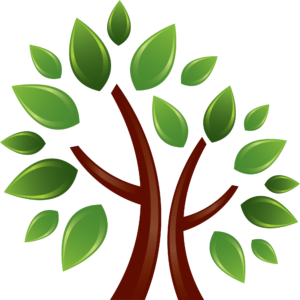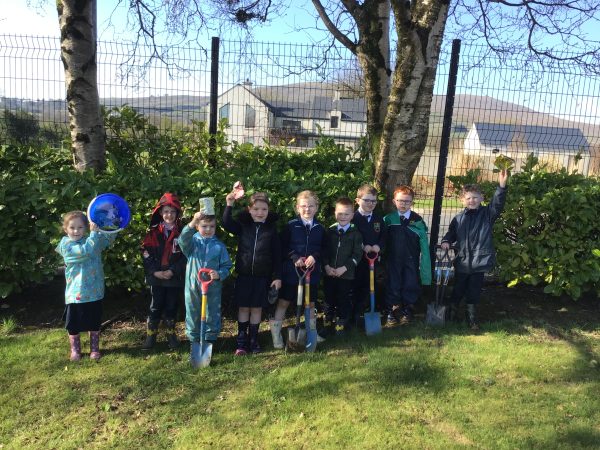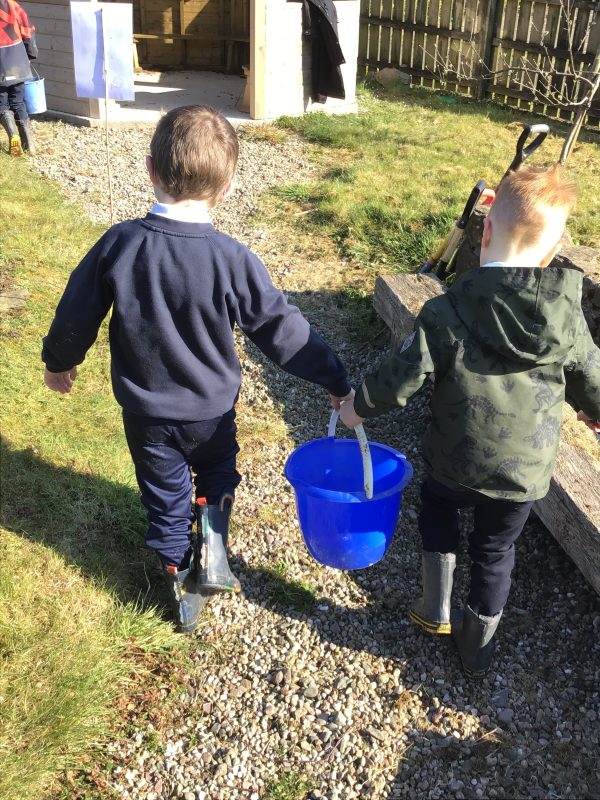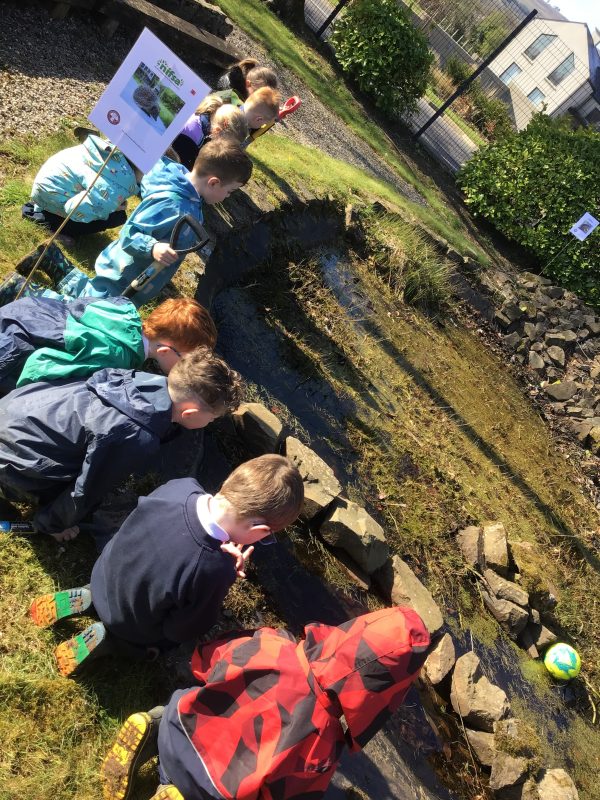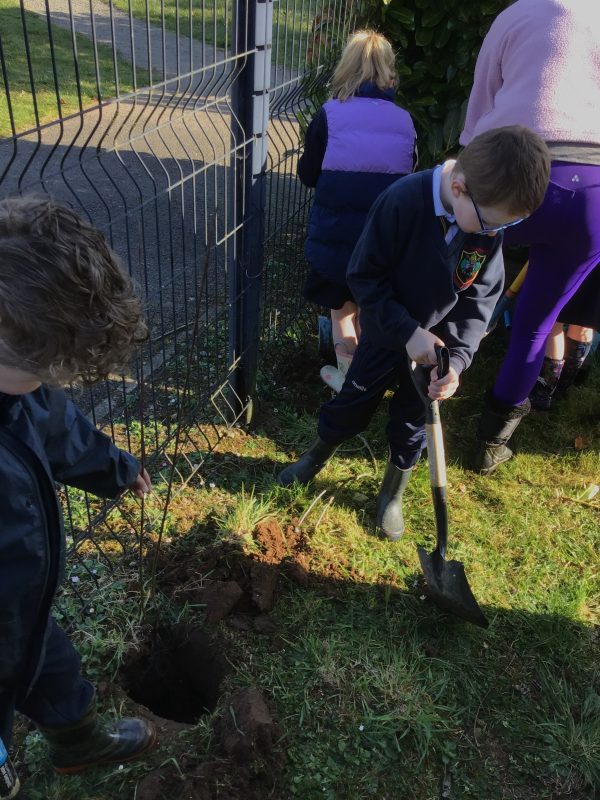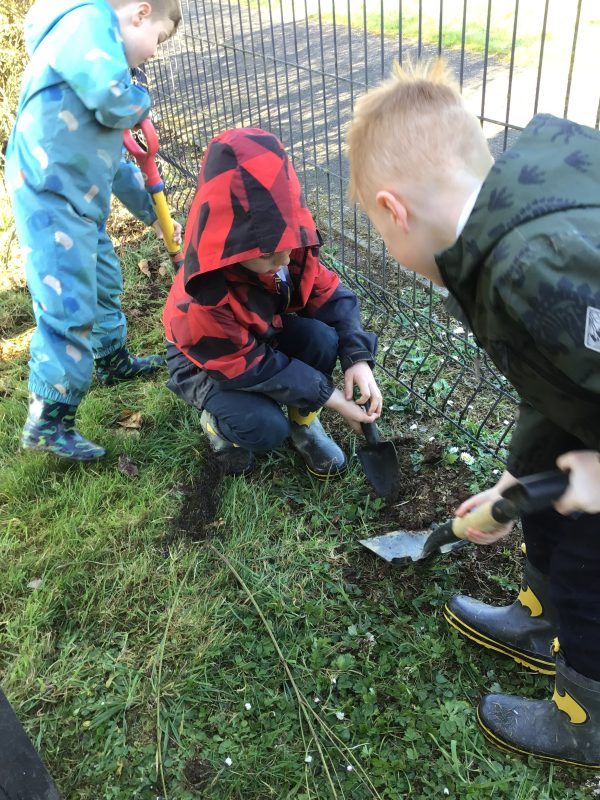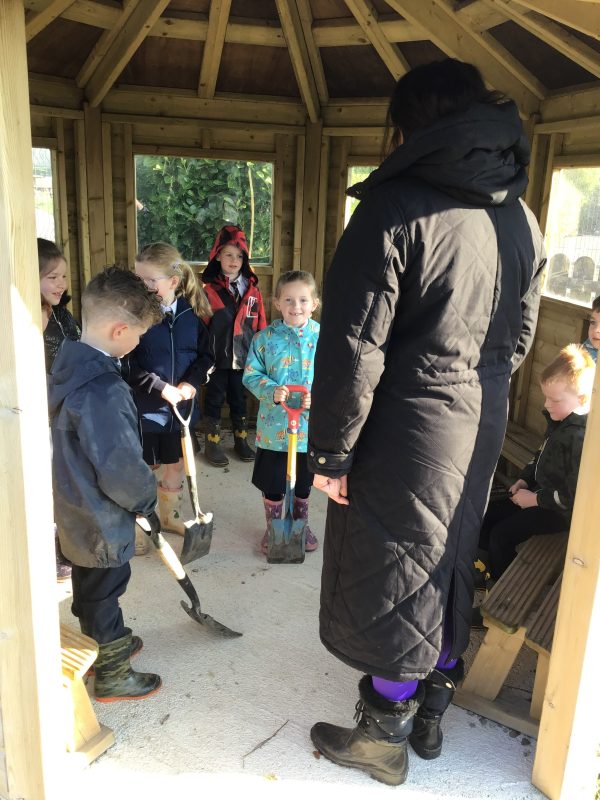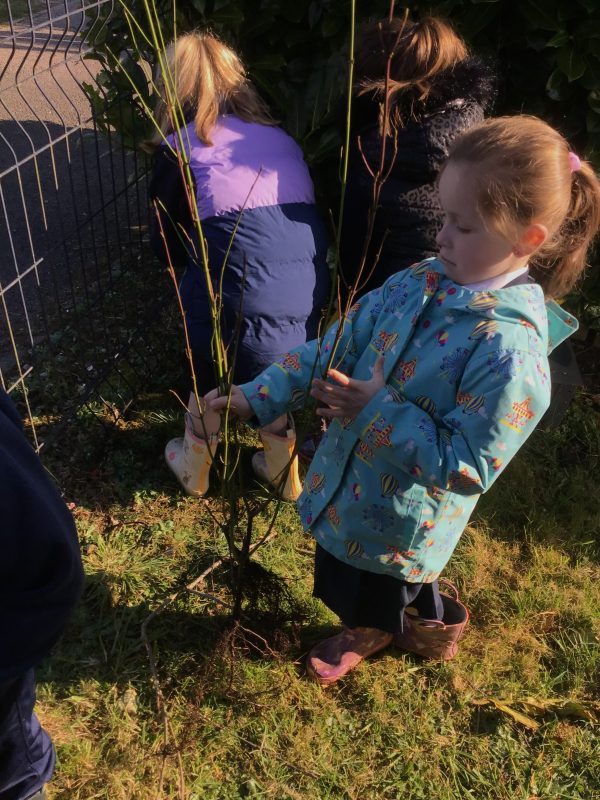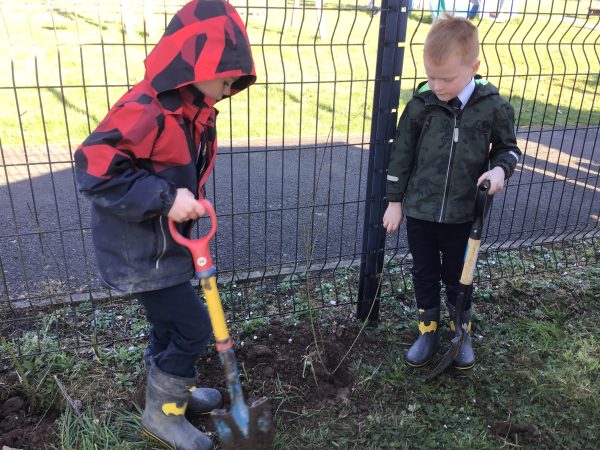8th April 2025
Hedge Planting
We applied to the Tree Council (www.treecouncil.org.uk) for free hedging to improve the environment around our school. We were delighted to be selected and so excited to begin to plant. When the young hedging plants arrived, we got ready to plant our very own hedge. What would we need? The children decided we needed spades, gardening hand spades and last of all a place that really needed a hedge. We went on a walk to find the best location. We found it right beside our pond. On finding the prime location we began to discuss the benefits of planting a hedge.
We discussed how planting a hedge would help the environment and wildlife for years to come. The children talked about why a hedge is important and shared their ideas. We talked about how hedges help protect animals and soil from wind and rain. We also discussed how more trees, plants, and leaves help make the air we breathe cleaner. The children learned that hedges give animals places to hide, live, and find food.
They looked closely at some existing hedges near the pond area to see what signs of life they could spy. The children discovered many insects in the hedges: spiders, snails, and even a bird’s nest. They imagined that underneath, larger animals might live in burrows or holes, hiding deep in the undergrowth. We were so excited to find tadpoles in the pond. We wondered would the birds come to our hedge and eat the tadpoles!
The children worked in small groups to dig holes, place the young plants carefully, and gently pat down the soil. We added some new compost to give the plants some extra nutrients to help they grow. They showed great teamwork and care, making sure each plant had enough space to grow. We talked about the roots and how they help the plant stay strong, absorb water and nutrients from the soil, and help the hedge to stay stable. The digging was hard work so they had to take turns at the job. The children estimated how deep the hole had to be and used the roots to measure and adjust the depth of the hole accordingly. As we planted, the children noticed worms, beetles, and other minibeasts in the soil. This sparked curiosity and led to conversations about how these creatures help the plants or if they eat the plants!
We used the boundary signs to keep everyone safe and made sure tools were handled responsibly. The children used feeling faces to reflect on how they felt about the activity. The children are looking forward to watching their hedge grow and observing it throughout the year to see what bugs, birds, or animals might make their home in it. The imagined what size the hedge would be when they grew up and became big P7 children. A very worthwhile activity which the children, animals and mini beast around the school will enjoy.
Before returning to the classroom we collected litter since we always try to leave the area like we found it or even better. Leave no trace behind.
